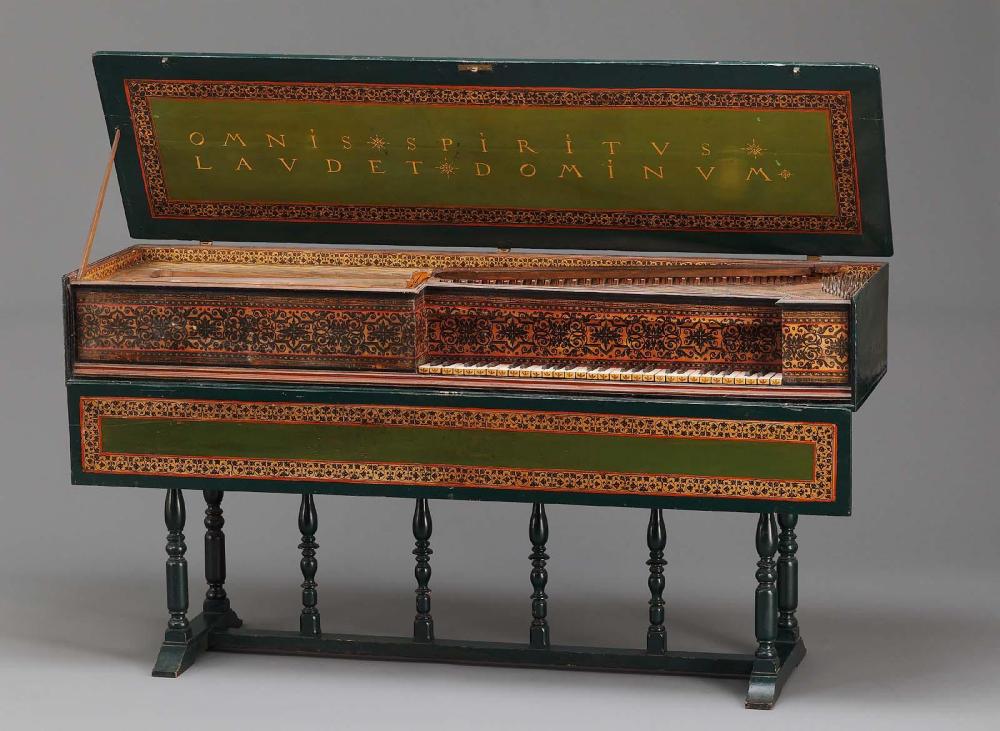Advanced Search 

Virginal (Muselar)
Joannes Ruckers the Younger (Flemish, 1578 – 1642)
1620
Object Place: Antwerp
Medium/Technique
Poplar, spruce, bone, bog oak
Dimensions
Length x Width x Height: 1707 x 495 x 243 mm
Credit Line
Arthur Tracy Cabot Fund
Accession Number2021.550
CollectionsEurope, Musical Instruments
ClassificationsMusical instruments – Chordophones
A virginal is a keyboard-activated plucked-string instrument like a harpsichord, but it is made with the strings running transverse to the keys, leading to more compact forms. A muselar virginal is rectangular and has its keyboard placed right-of-center. This particular instrument was made by Joannes Ruckers, the second in a family of influential harpsichord makers in Antwerp from the late 16th century to the very beginning of the 18th century. Ruckers instruments were prized well after their workshops fell silent, and their instruments were continually reworked over the decades and centuries. This instrument is no exception, having had its range extended in the 18th-century and, importantly, an overall restoration conducted in the beginning of the 20th century. That work was undertaken right here in Boston, just a few miles away from the MFA at the Chickering Piano Company. There, English musician and instrument maker Arnold Dolmetsch was hired to make historically accurate old instruments. Dolmetsch was a pivotal figure in the 20th-century revival of early European music making, and as inscribed inside the case of this virginal, Dolmetsch undertook its restoration in the year 1906.
ProvenanceAbout 1900, imported by Chickering and Sons Piano Company, Boston; between about 1906 and 1915, sold by Chickering and Sons to Ernest Blaney Dane (b. 1868 – d. 1942), Brookline, MA [see note]; by 1915, gift of Dane to the New England Conservatory of Music, Boston; 2021, sold by the New England Conservatory of Music to the MFA. (Accession Date: September 30, 2021)
NOTE: An inscription recorded inside the instrument states that it was restored in 1906 at Chickering and Sons under the direction of Arnold Dolmetsch. In 1915, Dr. Wallace Goodrich at the New England Conservatory noted that it was brought to the U.S. by Chickering and Sons shortly after 1900 and was the gift of Ernest B. Dane.
NOTE: An inscription recorded inside the instrument states that it was restored in 1906 at Chickering and Sons under the direction of Arnold Dolmetsch. In 1915, Dr. Wallace Goodrich at the New England Conservatory noted that it was brought to the U.S. by Chickering and Sons shortly after 1900 and was the gift of Ernest B. Dane.
